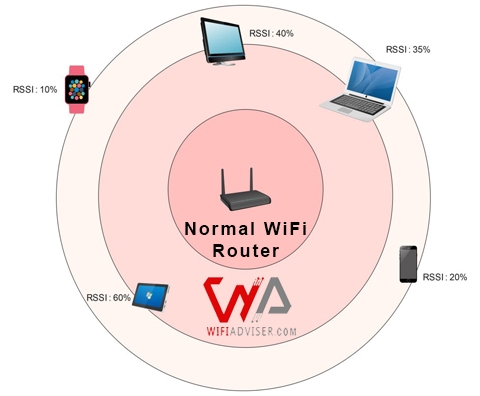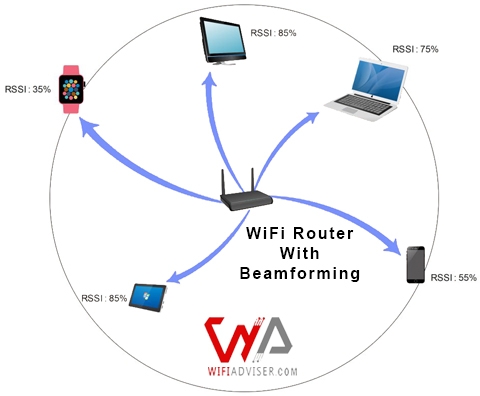What is Beamforming?
Beamforming is a technology used in wireless networks to enhance the strength and reliability of the signals sent between a router and connected devices. Instead of broadcasting wifi signals in all directions, beamforming technology focuses the energy of the signals and directs them towards the specific devices that need them. This leads to faster data transfer rates, stronger connectivity, and longer range without the need for additional hardware.
Wireless Signal Propagation
Radio waves are broadcast by the transmitting device in a range (according to the type of antenna) and the receiving devices that exist in that range receive the transmitted signals. Since the clients do not have a fixed and specific location, and the transmitter does not know their location, the signals are spread in all the covered areas. Whether there is a client in that area or not.
WiFi networks work in the same way. The WiFi router broadcasts signals in its coverage area, whether there are clients in that area or not .But this method of broadcasting signals is a big limitation in WiFi networks?
How Beamforming Works?
Beamforming works by sending out radio signals, which are reflected or absorbed by the objects in their path. The beamforming technology uses sophisticated antennas to analyze the reflections and interference, then directs the signals to the optimal path with maximum efficiency. For this to work, both the router and connected devices must support beamforming technology.
Beamforming is suitable for WiFi networks with multiple connected devices or wireless networks with significant obstructions that interfere with signal reception. With this technology, you no longer have to worry about dead spots or weak connections, making it a worthwhile addition to your home or office setup.
Beamforming Technology Overview
Traditionally, WiFi routers broadcast signals uniformly in all directions, but beamforming allows for more targeted and focused transmission. This is achieved by forming a “beam” of radio waves that “follows” the wireless device, optimizing the signal strength and data transmission.
Normal Router Signal Propagation:

In Normal Routers, Signals Are Broadcast all Around, Whether There are Clients Using Them or Not
Beamforming Router Signal Propagation:
As you can see, Beamforming increases the client’s RSSI ( Received Signal Strength ), Which increases the quality of the communication.

Targeted Transmission: Beamforming Routers Send Signals to Clients in a Targeted Manner
Beamforming Types
1. Explicit Beamforming
Needs to be supported by the client devices. From WiFi5 standard onwards, routers and clients support this technology.
- It’s better to note that while WiFi 5 standardized the beamforming technology, But not all 802.11ac devices support beamforming.
- Explicit Beamforming is more effective than Implicit beamforming.
2. Implicit Beamforming (Universal Beamforming)
There is no need to be supported by the clients. It is usually used for WiFi4 (802.111n) clients that do not support the Explicit model.
- Since this technology was not standardized in 802.11n ( WiFi4) standard, and on the other hand, it was a bit expensive to make, manufacturers made few models of routers compatible with this technology.
Conclusion
By concentrating the signal towards the desired device, beamforming technology enhances the signal strength, stability, and overall throughput of WiFi networks. This results in improved speed, reduced latency, and better network coverage, especially in environments with multiple devices or obstacles that could weaken the WiFi signal.






